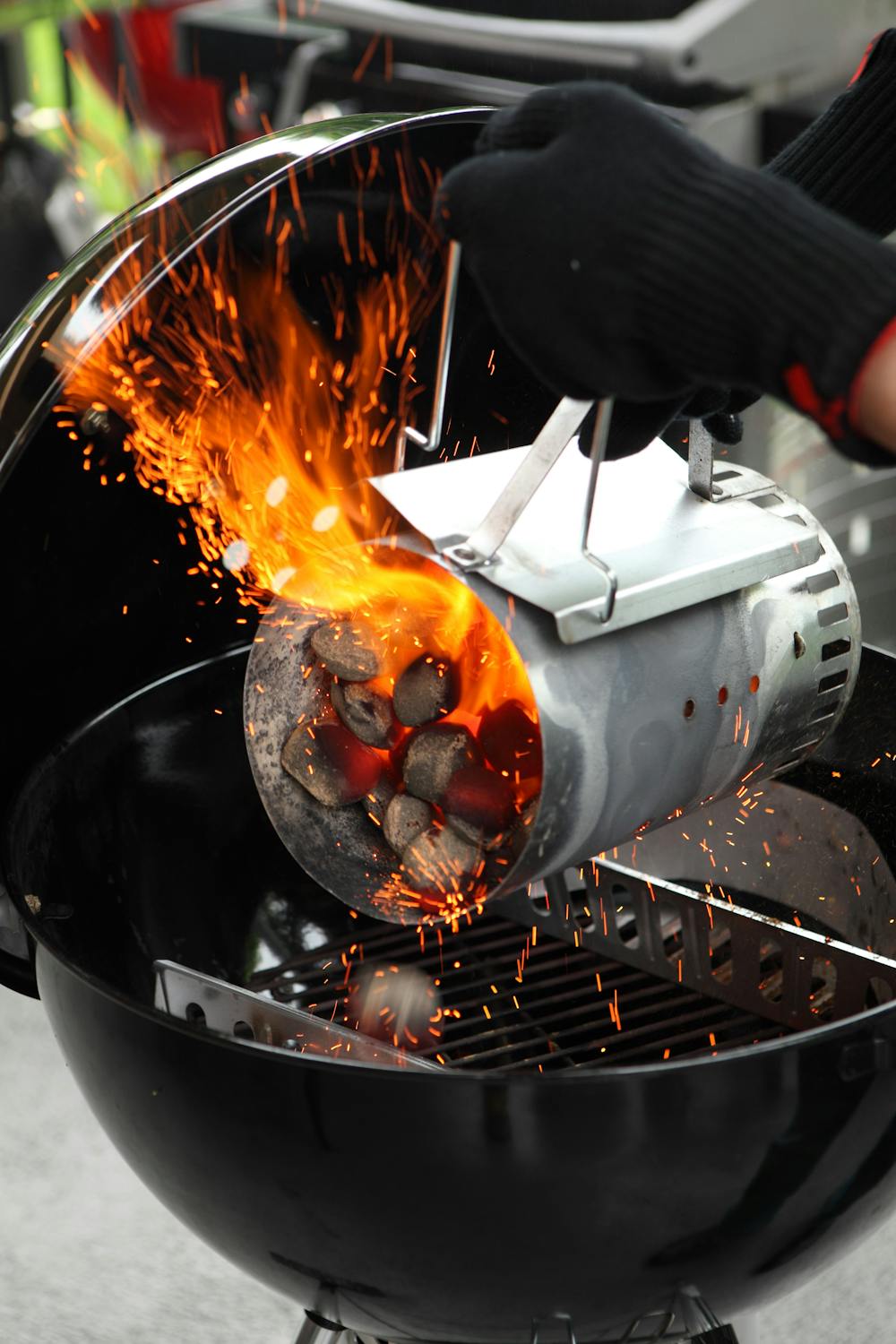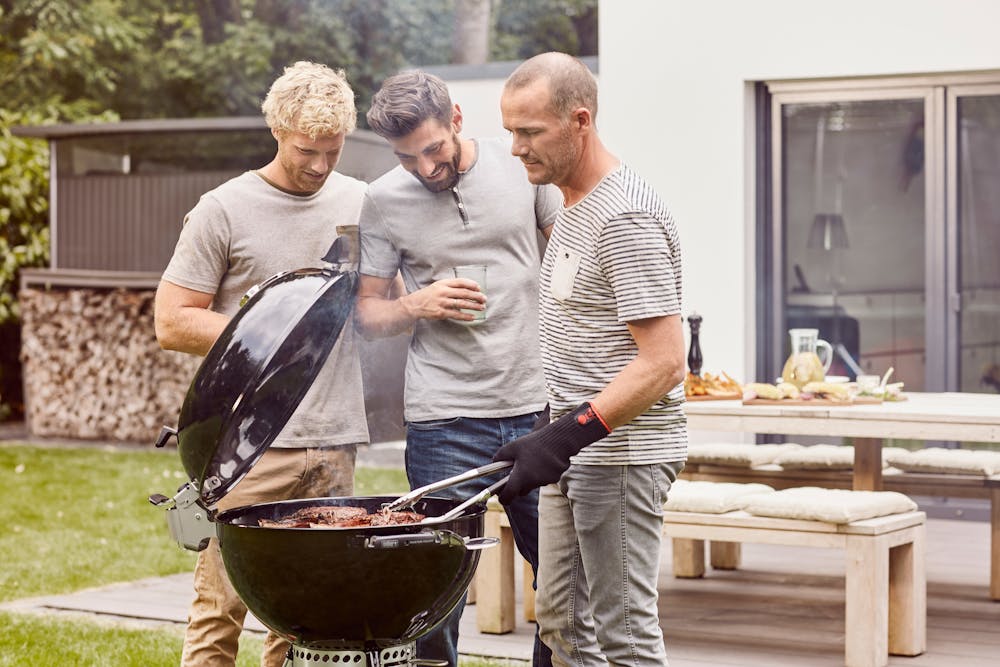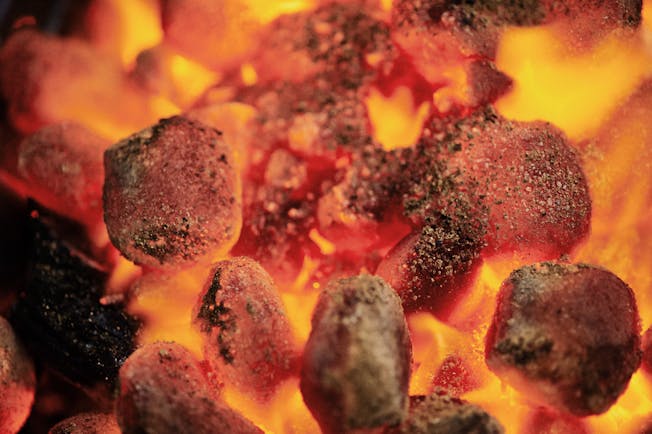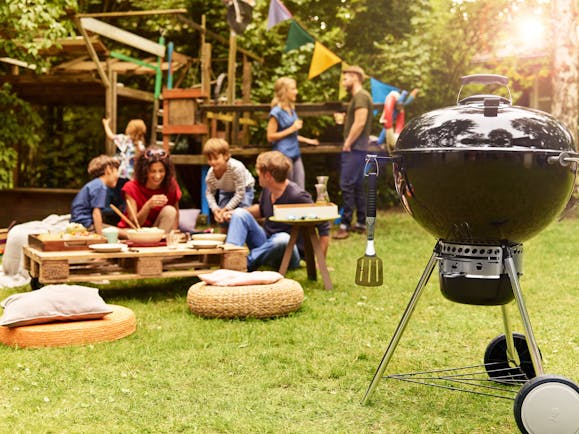There are few things more comforting in life than the soft crackle of a charcoal barbecue pitched against the background hum of conversation and laughter. We explain the ins and outs of mastering your charcoal barbecuing experience.
How to use a charcoal barbecue
Steps for Lighting a BBQ

Lighting a charcoal barbecue can sometimes be a difficult and lengthy process. To light your charcoal coals in the quickest, easiest and most effective way, use a Weber Rapidfire Chimney Starter. The chimney’s simple yet efficient design uses a compact cylinder to maximise the amount of contact between the briquettes, while an open lower rack makes it easy to insert lighter cubes for fire starting
Lighting is easy with the Rapidfire Chimney Starter:
- Measure out the correct amount of charcoal (as explained above) and pour into the Chimney Starter.
- Light three lighter cubes on the charcoal grate.
- Position the Chimney Starter over the cubes.
- Wait until flames appear at the top of the Chimney Starter. This is a sign that the coals are glowing.
- Shake the glowing coals into the grilling baskets (beware of sparks!) That’s it!
For more detailed instructions, check out our guide to lighting a BBQ.
Lighter Fluid advice While some people use chemicals like lighter fluid for lighting a charcoal barbecue, we advise against this as it leaves your grates coated in chemicals and thus affects the rich smell and taste that hardwood charcoal grilling is all about.
|
New Master-Touch Premium – Fast & Effective Lighting
New Master-Touch Premium – Fast & Effective Lighting
Recommended fuel for a charcoal barbecue: Lumpwood vs Briquettes?
Lumpwood is charcoal in its purest form and is made by slowly burning wood in an oxygen-deficient environment. Charcoal briquettes are manufactured in a similar way and combine waste wood and other ingredients – the Weber briquettes are 100% natural and contain carbonised wood, starch and water.
Briquettes are compressed into uniform shapes to allow for even burning. In terms of cooking times, lumpwood lights fast and burns hotter, which can be great for searing or high-heat cooking, whereas briquettes burn longer and are therefore best suited to slower cooking methods.
How Long Will It Take to Cook Food on a Charcoal Barbecue?

Whether you are roasting pork belly or smoking trout fillets, the length of time you keep your food under the lid and the temperature it’s exposed to will directly affect the result. To achieve the perfect texture, moisture and taste, it’s essential to use the right cooking method and getting your food to the optimal core temperature.
Consult our handy cooking methods table for optimum cooking conditions accounting for the cut of meat and its weight.
Depending upon the kind of Weber barbecue you have and the food you want to prepare, you will likely need to adapt your cooking methods to suit. Charcoal barbecuing is almost entirely about cooking the food on a grate directly above the coals or roasting it above a drip tray. There is also the “sear and slide” technique which combines both of these two methods.
Which food is the Sear and Slide Technique most suitable for? The sear and slide technique is ideal for thicker pieces of meat like chicken breasts, spatchcock chicken and sausages. The food is first seared over hot coals and then slid to the side over a drip tray to cook slowly. This technique ensures your food remains crispy on the outside and tender, juicy and cooked to your liking on the inside. |
What is the best way to extinguish a charcoal barbecue?
When it’s time to put out the charcoal barbecue, shutting down is just as easy as lighting it. All you need to do is fully close the vents on the bottom of the charcoal kettle barbecue and the vents on the lid. This will cut off all oxygen to the coals, causing them to die out gradually. Remember that this process can take some time before the coals are fully extinguished.
With the coals completely out, you can then reopen the bottom vents and remove the lid in order to speed up the cooling process. Only replace your charcoal barbecue cover once it has completely cooled.
How to dispose of the ash and charcoal from barbecuing
Charcoal barbecuing can produce ash and leftover coals that should be carefully disposed of. Lumpwood charcoal is a pure wood product, so once cooled completely its remains can be tipped into your compost bin or directly over plant beds. Ash from briquettes, however, is not pure wood and therefore should be emptied into a waste disposal bin once it’s completely cold.
How to remove the ashes
How to remove the ashes
Summary Become the master of the coals in just a few simple steps and thoroughly enjoy the charcoal experience. For memorable entertaining, the finest ingredients, and exceptional food, find a charcoal barbecue that’s right for you. |
Tags:
Related Posts

Charcoal Barbecuing
How to control the temperature of your charcoal barbecue

